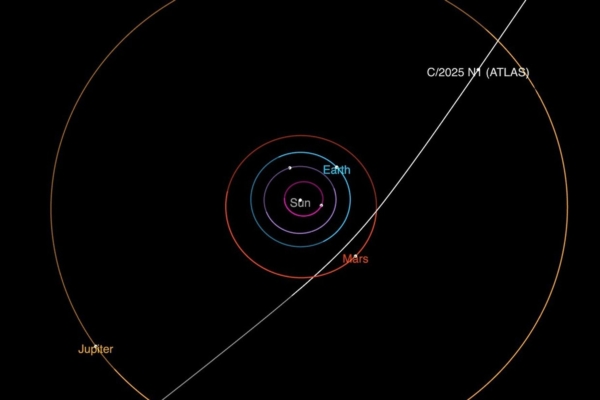Astronomers have recently discovered a rare interstellar object passing through the solar system. A physicist from Harvard University has warned that the unique features of this object may indicate that it is not an ordinary comet. He speculates that this mysterious interstellar object could be an alien probe.
“Its trajectory may have been designed,” Dr. Avi Loeb, a science professor at Harvard University, told Fox News Digital on August 10. “Perhaps its purpose is to carry out some kind of reconnaissance mission, or to deliver microprobes to these planets, or to monitor these planets… It looks quite unusual.”
In early July, this object known as 3I/ATLAS was first detected by the Asteroid Terrestrial-impact Last Alert System (ATLAS) telescope in Chile. According to NASA, this discovery marks the third time that an interstellar object has been observed entering the solar system.
Although NASA has classified the object as a comet, Loeb pointed out that images of this “cosmic visitor” show an unexpected glow in front of it rather than trailing behind. He described this phenomenon as “quite surprising.”
Loeb explained to Fox News Digital, “Comets usually have a tail, known as a coma, where dust and gas glow—reflecting sunlight emitted, and that is the characteristic of comets. But this time you see a glow in front of it, not behind.”
In a blog post, Loeb referred to this glow as “puzzling,” hinting that the object might be controlled by some intelligent beings focusing their attention on our blue planet. The theoretical astrophysicist wrote in a blog post last Wednesday, “3I/ATLAS comet shows a glow in front, with no evidence of gas molecules, which is puzzling.”
With a diameter of approximately 20 kilometers, larger than Manhattan, 3I/ATLAS appears unusually bright for its distance. However, Loeb highlighted that its most unusual feature is its orbit.
“Imagine that if an object entered the solar system from a random direction, the probability of aligning its orbit so precisely with the planetary orbits is only one in five hundred,” he said.
“It lies in the plane of the solar system’s orbits, with an error of less than 5 degrees.” Loeb explained to CNN.
“It could be coming to save us, or it could be coming to destroy us. We should be prepared for both scenarios and check if all interstellar objects are indeed rocks,” he stated.
“If it turns out to be a technological artifact, it would clearly have a profound impact on the future of humanity,” Loeb told Fox News Digital. “We need to decide how to handle it.”
This interstellar object from the center of the Milky Way is expected to pass by Mars, Venus, and Jupiter. However, Loeb suggested that the likelihood of such an occurrence happening randomly is extremely low. “It will also come close to these three planets, with a probability of one in twenty thousand,” he said.
According to NASA, this 3I/ATLAS object will reach its closest point to the Sun, approximately 130 million miles away, on October 30.
Florida Republican Representative Anna Paulina Luna echoed Loeb’s remarks, calling for increased observation of 3I/ATLAS and remaining vigilant.
“I urge NASA to extend the Juno mission to study the interstellar object 3I/ATLAS,” Luna wrote on X platform. “Thanks to Avi Loeb for his dedication to exploring the cosmos. We must seize this opportunity for groundbreaking discoveries.”
Humans have only observed three interstellar objects entering the solar system to date. There may be more interstellar visitors from the stars that have passed through the solar system but have not been detected. The first observed interstellar object was the scout star discovered in 2017, followed by the 2I/Borisov comet in 2019. The scout star is neither an asteroid nor a comet and is currently classified as an unidentified flying object.

